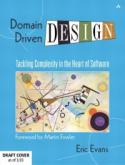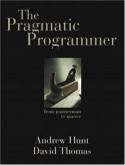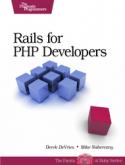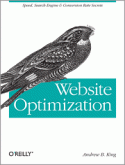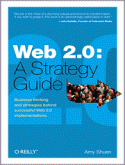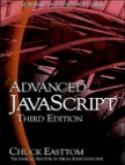Is your site easy to find, simple to navigate, and enticing enough to convert prospects into buyers? Website Optimization
shows you how. It reveals a comprehensive set of techniques to improve
your site's performance by boosting search engine visibility for more
traffic, increasing conversion rates to maximize leads and profits,
revving up site speed to retain users, and measuring your site's
effectiveness (before and after these changes) with best-practice
metrics and tools.
Remember when an optimized
website was one that merely didn't take all day to appear? Times have
changed. Today, website optimization can spell the difference between
enterprise success and failure, and it takes a lot more know-how to
achieve success.
This book is a comprehensive guide to the tips, techniques, secrets,
standards, and methods of website optimization. From increasing site
traffic to maximizing leads, from revving up responsiveness to
increasing navigability, from prospect retention to closing more sales,
the world of 21st century website optimization is explored, exemplified
and explained.
Website Optimization combines the disciplines of online
marketing and site performance tuning to attain the competitive
advantage necessary on today's Web. You'll learn how to improve your
online marketing with effective paid and natural search engine
visibility strategies, strengthened lead creation and conversion to
sales methods, and gold-standard ad copywriting guidelines. Plus, your
increased site speed, reduced download footprint, improved reliability,
and improved navigability will work synergistically with those
marketing methods to optimize your site's total effectiveness.
In this book for business and IT managers, author Andrew King,
president of Website Optimization, LLC, has assembled experts in
several key specialties to teach you:
- Search engine optimization -- addressing
best (and worst) practices to improve search engine visibility,
including step-by-step keyword optimization guidelines, category and
tag cloud creation, and guerilla PR techniques to boost inbound links
and improve rankings
- Pay-per-click optimization -- including ad copywriting
guidelines, setting profit-driven goals, calculating and optimizing
bids, landing page optimization, and campaign management tips
- Optimizing conversion rates -- increasing leads with site
landing page guidelines, such as benefit-oriented copy,
credibility-based design, value hierarchies, and tips on creating
unique selling propositions and slogans
- Web performance tuning -- optimizing ways to use (X)HTML, CSS, and Ajax to increase speed, reduce your download footprint, and increase reliability
- Advanced tuning -- including client-side techniques such as
on-demand content, progressive enhancement, and inline images to save
HTTP requests. Plus server-side tips include improving parallelism,
using cache control, browser sniffing, HTTP compression, and URL
rewriting to remap links and preserve traffic
- Web metrics -- illustrating the best metrics and tools to
gather details about visitors and measure web conversion and success
rates. Covering both search marketing metrics and web performance
measures including Pathloss and waterfall graphs
Website Optimization not only provides you with a
strategy for success, it also offers specific techniques for you and
your staff to follow. A profitable website needs to be well designed,
current, highly responsive, and optimally persuasive if you're to
attract prospects, convert them to buyers, and get them to come back
for more. This book describes precisely what you need to accomplish to
achieve all of those goals.



